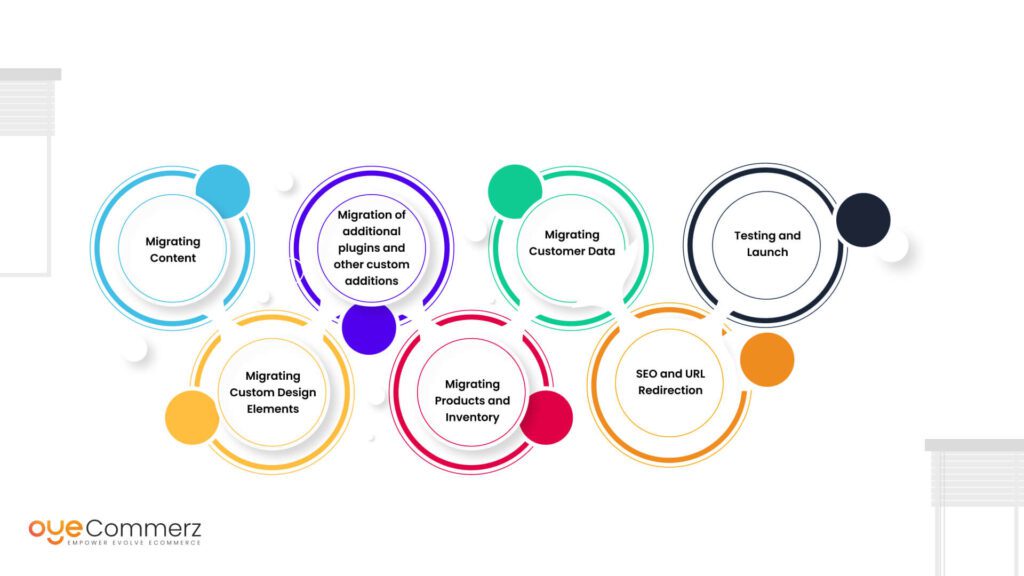Seamless WP to Shopify Migration: Your Ultimate Guide to E-commerce Success
Transitioning from WP to Shopify marks an promising step in streamlining your e-commerce operations. As companies grow, selecting a solution that supports growth potential, UX, and flexibility becomes crucial. Shopify is widely recognized as a preferred choice for e-commerce professionals, providing superior adaptability, security, and user-friendliness. In this guide, we’ll explore the transformative impact of this migration, discuss the advantages, and provide practical tips to ensure a seamless transition.
1. Why Migrate from WordPress to Shopify?
WordPress, paired with WooCommerce, continues to support countless e-commerce platforms. Nevertheless, as companies expand, challenges like plugin dependency, data risks, and complex setups often obstruct growth. Shopify, designed explicitly for digital retail, eliminates these issues with an comprehensive, user-friendly platform. Real data supports this transition—Shopify hosts over 4.4 million stores worldwide, with a documented 10% increase in sales performance for numerous merchants post-switch.
2. Shopify's Perks for Thriving Online Stores
Shopify’s robust ecosystem caters for scaling businesses. Its notable features include:
- Seamless Customization: Shopify provides over 80 expertly crafted themes.
- Built-in Features: Features like Shopify Payments and built-in SEO save time and effort.
- Global Reach: Currency versatility and localization features empower brands to expand internationally.
Additionally, Shopify delivers an uptime rate of 99.98%, ensuring your store is always operational.
3. Preparing for WP to Shopify Migration
Prior to starting the migration process, assess your existing setup. Review inventory details, client information, and SEO performance. Tools like Shopify’s Migration Kit or external tools help ease the transition. Create a comprehensive plan, making sure all assets—product descriptions, images, and articles—are ready for seamless import.
4. The Importance of Accurate Data Migration
Transferring your data forms the foundation for a successful transition. When moving from WordPress to Shopify, focus on:
- Product Information: SKU, item summaries, and groupings.
- Client Information: Emails, order history, and preferences.
- Search Engine Considerations: Retain meta tags, URLs, and redirects to maintain search rankings.
Leverage tools such as LitExtension to streamline data transfer while minimizing errors.
5. Customizing Your Shopify Store
After the move, personalizing your Shopify store helps it reflects your brand. Utilize Shopify’s drag-and-drop editor to design pages effortlessly. Shopify's themes are mobile-responsive, ensuring a seamless UX across devices—a critical factor, since 74% of online shopping comes from mobile visitors.
6. Maintaining SEO During Migration
Search engine optimization is crucial for preserving your online presence during migration. Shopify is highly optimized for search engines with organized link formatting, preloaded features, and smooth content management. Make sure you:
- Implement 301 redirects for existing links.
- Enhance updated content with keyword-rich content.
- Use Shopify's apps Plug in SEO to track analytics post-migration.
7. Post-Migration Testing
Once the migration is complete, run detailed checks.
Review: - Website speed (Shopify delivers faster speeds in contrast with WP).
- Functionality of payment gateways and checkout processes.
- Adaptability across devices.
Quality assurance guarantees your store provides a smooth shopping journey from day one.
8. Case Study of a Successful Migration
An example of effective platform switching is Gymshark, a fitness apparel brand that moved to Shopify. After the switch, the company experienced a 60% boost in mobile sales and significantly lowered site downtime. This showcases the potential of Shopify in enhancing online business success.
9. Overcoming Common Migration Issues
Migration is not without obstacles, such as data integrity and adjusting tailored features. However, Shopify’s Seamless Shopify migration extensive assistance and third-party experts make overcoming these hurdles manageable. Collaborating with experienced Shopify developers ensures a trouble-free transition.
10. Starting Your Journey with Shopify
Migrating from WP to Shopify marks a forward-thinking decision to online retail. By focusing on growth, streamlining operations, and improving buyer satisfaction, Shopify enables companies to thrive in competitive markets.
Conclusion
Switching from WordPress to Shopify is a strategic move that can significantly boost your online business performance. With a robust migration plan, the appropriate resources, and expert support, you can achieve new growth opportunities.
Ready to make the leap? Reach out today to learn how our Shopify migration services can revolutionize Data migration to Shopify your e-commerce platform. Get in touch today, or ask yourself: Is it time to seize Shopify’s advantages for your store?
